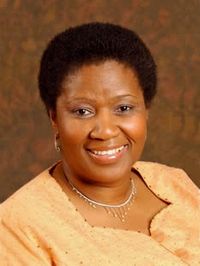Hout Bay: skills shortages and unemployment

It is strange but it’s not easy to find some casual labor in a country scared be awful unemployment. Simon Gungqa and dozens of other hopefuls stand at a busy intersection, their eyes watchful, appealing to motorists to hire them for a few hours. The reason is a crippling shortage of skills.
It's a dispiriting daily ritual for 26-year-old Gungqa, a school dropout and sometime gardener with no regular work, who forms part of what South Africa's deputy president recently described as the country's poorly educated, untrained army.
At a small community employment center nearby, program manager Tania Bownes sighs as she contemplates the 300 domestic workers and glut of gardeners on her list of jobseekers. But there are only a handful of carpenters, stonemasons and seamstresses - and all the plumbers and electricians have been snapped up.
"We have a vast pool of labor but a real lack of trained workers," said Bownes, whose WorkNow project tries to find jobs for unemployed blacks living in an impoverished suburb of this otherwise wealthy town. "Skilled artisans are like gold."
The paradox in Hout Bay, a coastal resort near Cape Town, is witnessed throughout South Africa as it struggles with estimated 40 percent unemployment coupled with shortages in almost every profession and craft - top level managers, teachers, engineers, bricklayers and welders.
The government wants to train 50,000 artisans by 2010 - requiring an annual increase of 7,500; more than double the number of students in higher levels of school and training to 1 million; and dramatically increase the number of engineering graduates. It is also drafting retired people back into the labor force and trying to persuade South Africans working abroad to return home.
Even so, it will have to rely on imported skilled workers to meet deadlines for stadium construction, transport and other infrastructure projects for the 2010 World Cup soccer tournament, as well as to provide services when the anticipated hordes of visitors arrive.
Although there is a worldwide shortage of engineers and artisans, South Africa is particularly badly hit because of the legacy of apartheid, which reserved quality schooling, training and jobs for the white minority and condemned a generation of blacks to drudgery.
The 2001 census showed that of the 45 million population, at least 4 million South Africans at least 20 years old had no schooling at all, while another 4 million had limited schooling at primary school level - about 18 percent of the population in all.
The government has made big strides in education and training since the end of apartheid in 1994. But critics maintain that some of its policies - including so-called affirmativeaction which prioritizes nonwhites in awarding jobs - have worsened the skills crisis.
"The country has cut off its nose to spite its face," John Kane-Berman, director of the South African Institute for Race Relations, wrote in a column in Business Day. "The massive imbalances between black and white in the possession of skills have their origins in apartheid. A wiser government would have done everything possible to retain scarce skills despite their whiteness."
Kane-Berman - whose organization last year estimated that about 1 million white South Africans had left the country in the past 10 years - said there should be more attention to the shortcomings of current education and training policies.
"We see a lot of certificates in travel and tourism," said Bownes, of the job bank. "But there is a need for more practical training so they can go out and fix the toilet tomorrow. There may seem to be a lot of glamor in a head office but the money is in the practical work."
Bownes says although many young people in the community are eager to be trained as carpenters or plumbers, they don't have the money for the bus fare to Cape Town training centers and would lose desperately needed cash if they were in school instead of working casual jobs.
Young people are disproportionately hit by South Africa's unemployment, which is officially 26 percent. In reality it's closer to 40 percent because the government figure doesn't include the informal sector or those who have given up looking for a job.
Deputy President Phumzile Mlambo-Ngcuka was named last year to spearhead two programs designed to halve unemployment by 2014 and boost skills development.
At a press conference last month, Mlambo-Ngcuka said that around 1 million new jobs had been created in the past two years, but the poorest communities remained too marginalized to benefit.
"We don't ... have a comprehensive intervention to deal with those people. Of all the things we have to do, this is the one I am most worried about," she said. "It is also the one that is the most difficult. It is also one that lingers on from what apartheid was about."
There was "an army of people we must take care of sooner rather than later," she said.
Michael Mafanya, who dropped out of school "many years ago" and had problems spelling his own name, was part of that army. Barefoot, missing a front tooth and aged beyond his 37 years by a lifetime of disappointment, he lined up at the Hout Bay intersection for casual work,
"I can do your garden," said Mafanya. "Or let me wash your car. I can do paving, or painting. Let me do anything."
Subscribe to Pravda.Ru Telegram channel, Facebook, RSS!


